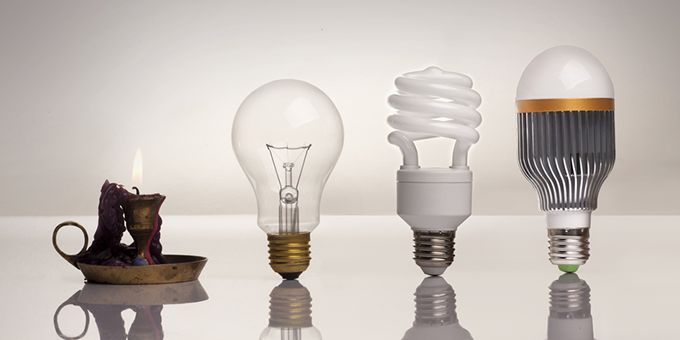Technologies that enable more energy efficient lighting are now widely available. Management and maintenance of lighting equipment can also help make it more efficient.
 Importance of Energy Efficient Lighting for On-Site Work
Importance of Energy Efficient Lighting for On-Site Work

Emily Folk | Conservation Folks
Sufficient lighting is essential to workplace safety, and electricity used for lighting can be a significant business cost. Technologies that enable more energy efficient lighting, however, are now widely available. Management and maintenance of lighting equipment can also help make it more efficient. It's important that businesses take advantage of these energy efficient lighting technologies and practices. Here's why.
Reduced Costs
In 2017, about seven percent of electricity consumption in the U.S. went toward lighting. This is not a negligible amount. Increasing the efficiency of their lighting equipment can save businesses money.
Long Life
Many of the newer, more energy efficient technologies also have longer lifespans than the older technologies. Decreasing the frequency of bulb replacement also lowers costs and reduces the risk of lights going out while employees are working.
Reduced Waste Heat
Traditional bulbs waste more of the energy they receive on producing heat. This waste heat raises the temperature inside a building, meaning HVAC systems must work harder to reduce temperatures in hot months. Using newer technologies that produce less waste heat reduces the workload of these HVAC systems.
Ideal Lighting Levels
Efficient bulbs produce more light from the energy they receive, so it's more affordable and feasible to light a space more brightly. Energy-saving technologies can also adjust the output of lighting equipment based on how much light is needed.
Reduced Environmental Impact
Using less electricity and replacing bulbs less often means a reduced environmental impact. This is positive for the environment and can help businesses reach their sustainability targets.
Choosing the Right Lighting Options
There are many different types of energy-efficient technologies and lighting management approaches that can help to reduce energy usage. Businesses need to look at the characteristics of each technology and approach to determine what will best meet their needs. The most important considerations when it comes to lighting are budget, size and power.
For comparison with the following lighting technologies, traditional incandescent bulbs provide 12 to 18 lumens per watt of power they receive, a measurement called efficacy, and have a lifetime of about 750 to 1,500 hours.
Light Emitting Diodes (LEDs)
LEDs are a kind of solid-state lighting and are highly efficient. Depending on the type, LED lights can have an efficacy of 27 to 150 lumens per watt and a lifetime of up to 100,000 hours.
Fluorescent Lighting
There are several types of fluorescent lighting. Compact fluorescent lamps, or CFLs, have an efficacy of 60 to 70 and a lifetime of 6,000 to 10,000 hours. Linear fluorescent lighting has an efficacy of 80-100 and a lifetime of around 20,000 hours.
High-Intensity Discharge (HID) Lighting
HID lamps use a gas-filled tube to produce light. They may use metal halide, mercury vapor or high-pressure or low-pressure sodium. They are best for lighting large areas, typically outdoors. They have an efficacy between 25 and 150 depending on the technology used and a lifetime of between 5,000 and 24,000 hours. Mercury vapor HID lights are the least efficient, while low-pressure sodium lights are the most.
Solar Lighting
Some lighting equipment can run on solar power. Because these lights generate their own electricity, using them won't increase your electric bill. They need to be in a location where they get sufficient sunlight, however, and their performance can vary based on how much sun they get on a given day.
Using Natural Light
Another energy-saving lighting approach is increasing the amount of natural light that enters a space. Installing additional windows, using high-performance glazing and making sure windows are clean can help let more natural light into a building.
Lighting Management Technology
There are several types of lighting management technologies that can help increase efficiency. Occupancy sensors can dim or turn off lights when no one is in the room. They work by sensing movement and can reduce electricity usage by 30 percent. Daylight sensors or photocells adjust the amount of artificial light based on the amount of natural light in a room. This technology can reduce electricity consumption by as much as 40 percent.
Preventative Maintenance
Regularly inspecting, cleaning and repairing lighting equipment can help it perform more efficiently and last longer. Performing maintenance proactively as opposed to reactively helps you to catch potential problems early.
Using energy-efficient lighting for on-site work is increasingly important in today's world. Luckily, there are many different technologies and practices that can help businesses increase the efficiency of their lighting.
The content & opinions in this article are the author’s and do not necessarily represent the views of AltEnergyMag
Comments (0)
This post does not have any comments. Be the first to leave a comment below.
Featured Product

